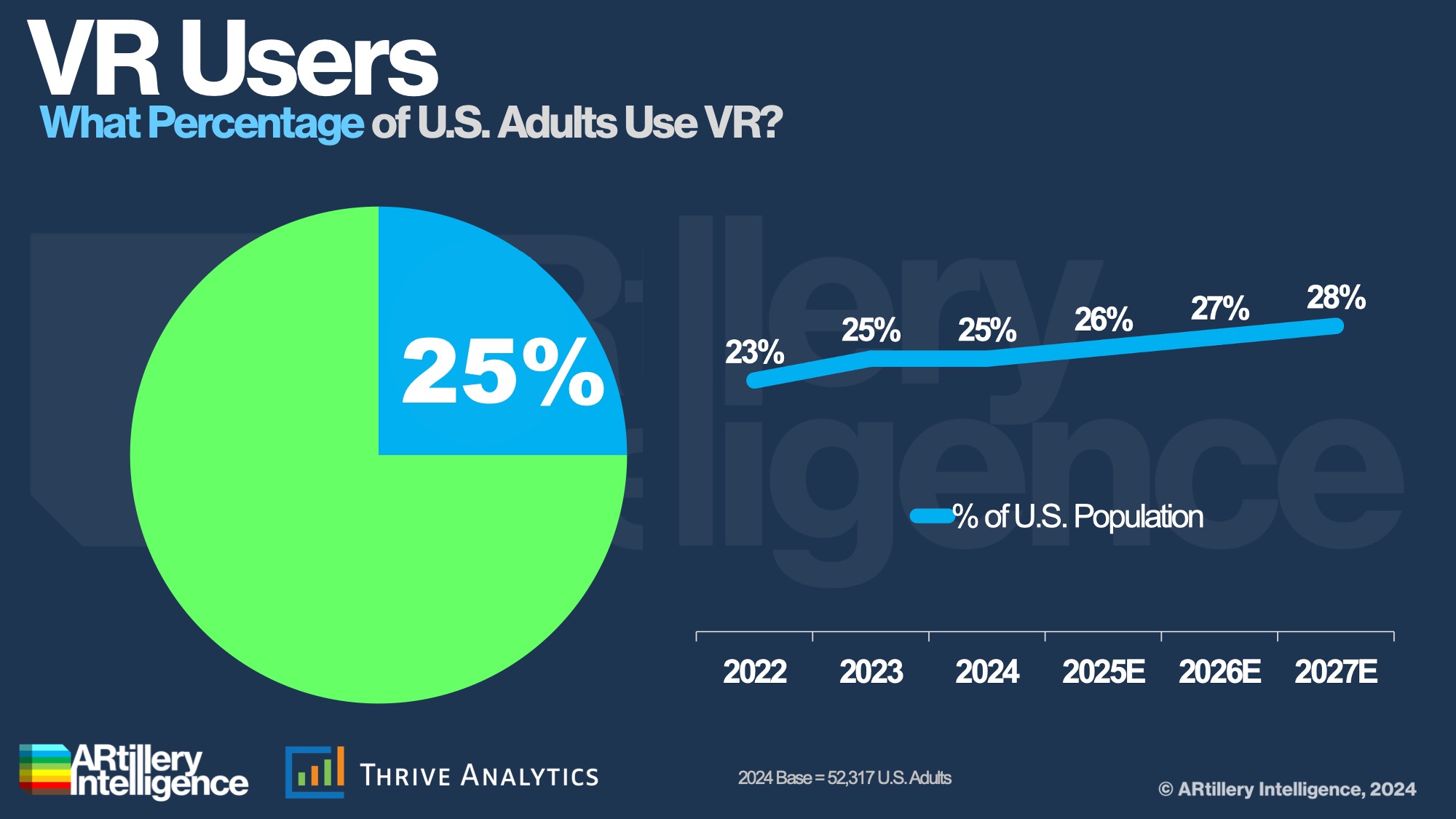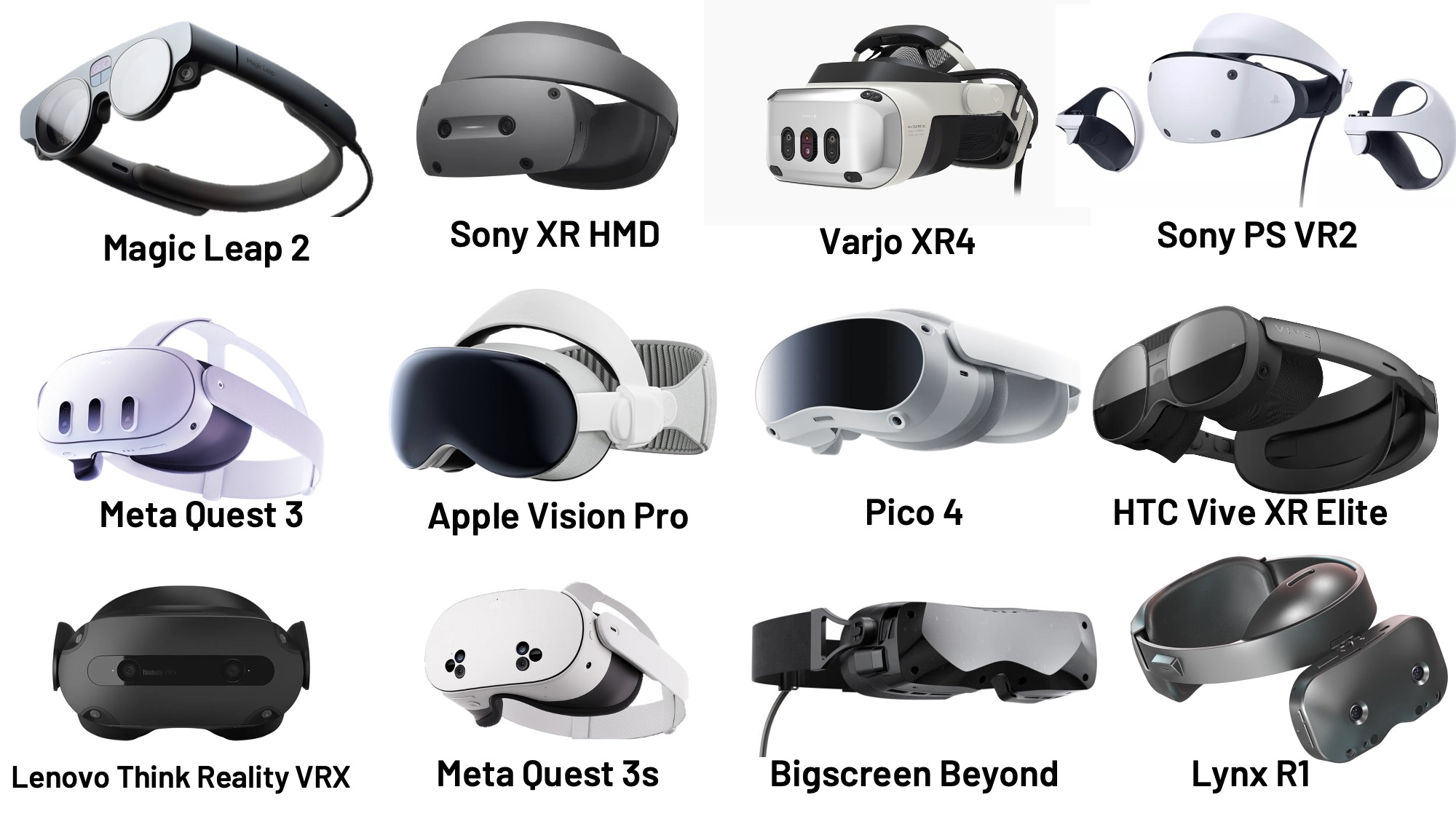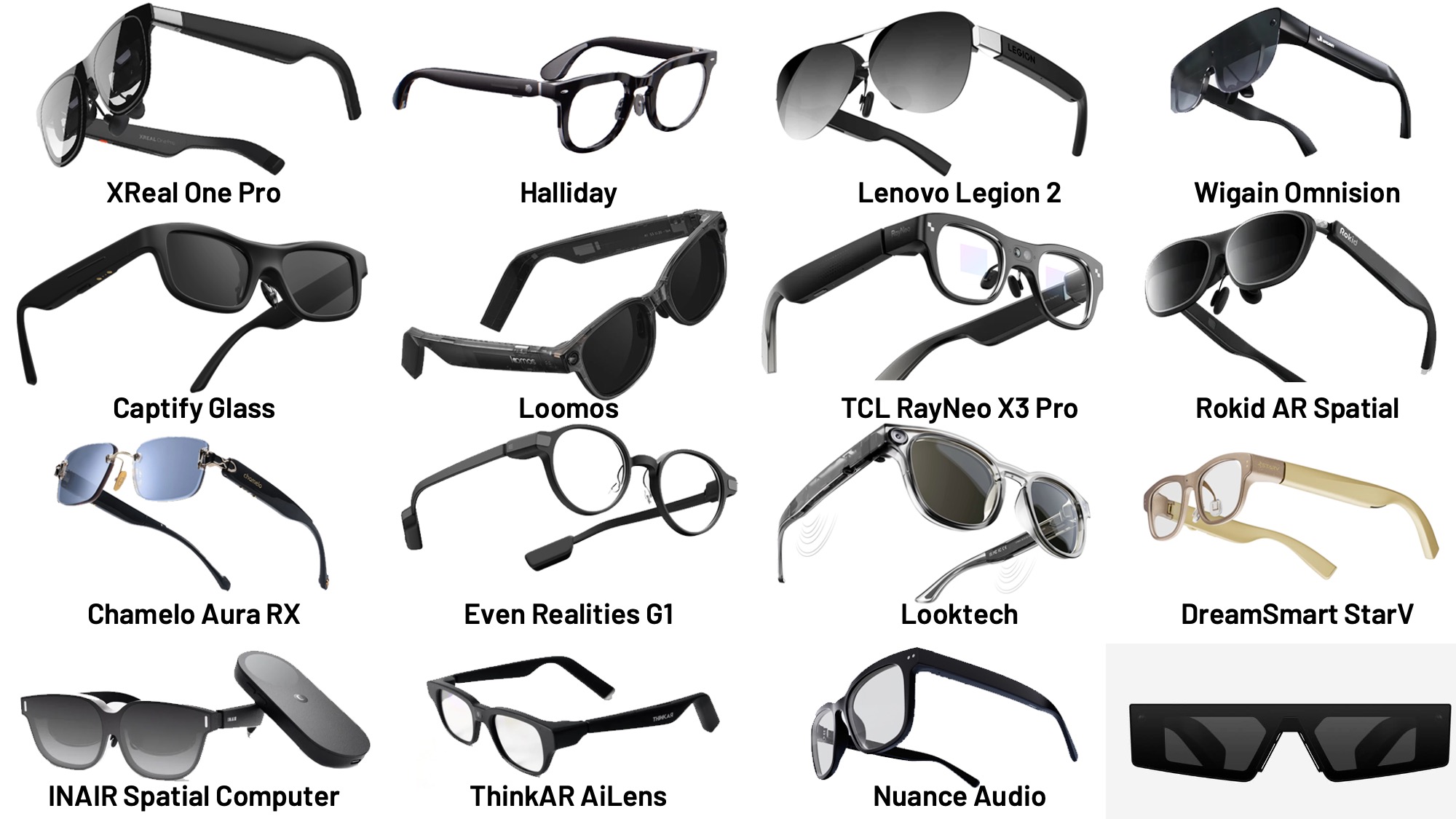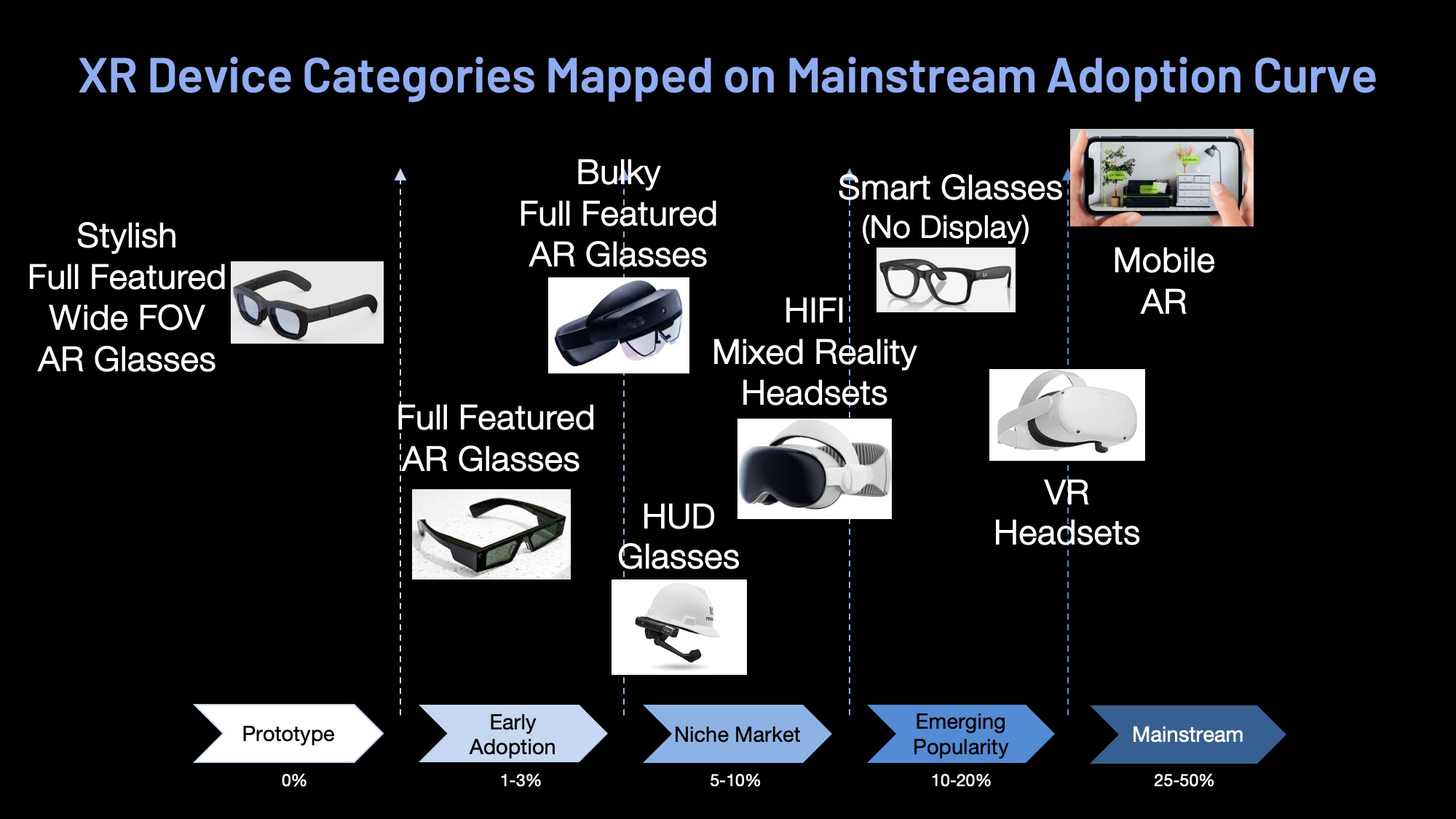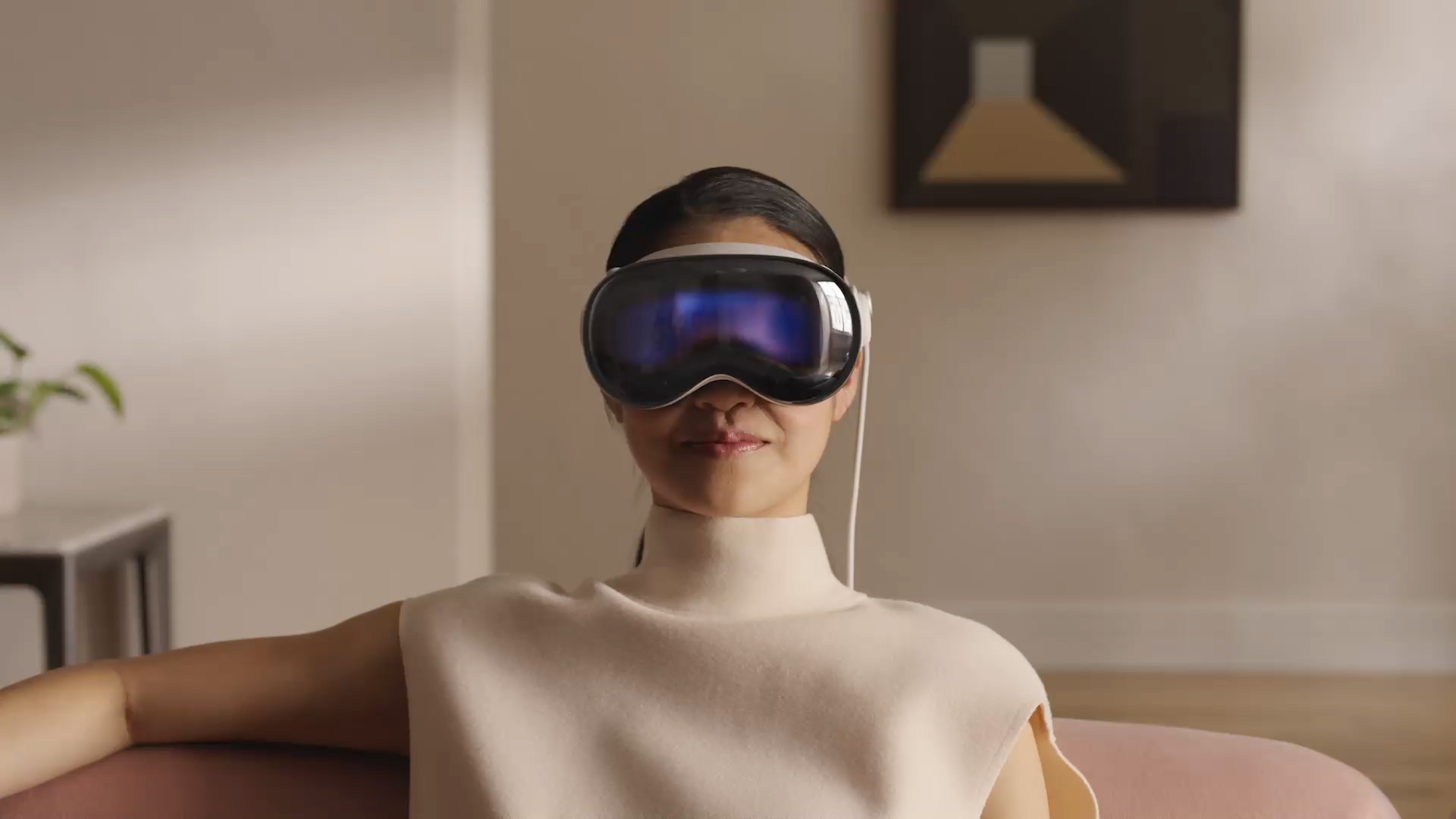I believe the XR revolution is ready to reach everyone. But to truly conquer the mainstream, we need master XR builders creating eclectic immersive content and apps that resonate with every corner of the world.
Are You an XR Builder?
In my two decades in XR—as an entrepreneur, investor, and ecosystem builder—I’ve never felt confident enough to say this… until now:
XR is Finally Going Mainstream
The market signals are clear. According to AWE’s home analyst, ARtillery Intelligence, XR is on track to reach $29B in 2025, growing at a steady 26% annually. IDC is even more bullish, projecting a compound annual growth rate over 38% for the next five years. After AI, XR is the fastest-growing tech sector.
Mobile AR adoption has hit 35% of the U.S. population, and it’s especially big with Gen Z—over 91.7% of them are already shopping with AR, according to a recent Dynata survey.
VR adoption isn’t far behind, with 25% of the U.S. population using it. What’s more, 1 in 4 teenagers now plays in VR. In 2024 alone, we saw a record 13 million new VR users. Kids get it—and they’re going to grow up living in these worlds.
Mainstream is typically defined when reaching over 25% of a certain target market. According to these stats - it’s official.
But Wait… We Are Still Struggling
If you’re a seasoned XR professional, you might be thinking: Wait—really? We’ve been grinding for years, and we’re still fighting to grow our businesses.
I hear you—and I appreciate your perseverance. You’ve helped bring the industry to where it is today.
But the pace of innovation and the energy in XR today tells me we’ve crossed a threshold. In the past 20 months, we’ve seen a powerful wave of new headsets hit the market—smaller, better, and packed with improved mixed reality capabilities.
We’re expecting launches this year from Samsung (headset + AR glasses), and Android XR has now been launched—another massive accelerator. At CES this January, 16 new smartglasses debuted—a mix of AI and AR glasses, some with displays, some without. Snap Spectacles are perhaps the most promising, currently geared for developers: lightweight, full-featured AR glasses with a rich library of fun experiences.
And we’re seeing surprising consumer traction: Meta Ray-Ban Glasses: a breakout hit, selling millions; the only XR product to get a Super Bowl ad this year.
Big Tech is all-in, investing billions in this race. Meta alone is on track to invest $100B into XR.
It’s Good Enough
When I say XR is going mainstream, I don’t mean the hardware is perfect or that we’re all rich now.
I mean we’ve turned a page. We’re in a different stage.
- The hardware is good enough and widely available
- The tools for XR content creation have matured
- AI has eliminated much of the hard work
There are no more excuses.
To reach the mainstream, we now need master builders of all kinds—developers, designers, entrepreneurs—creating content and experiences that truly resonate with people, in every culture, every community, every niche.
Forget about the killer app. The platform itself is the killer app — an enabler for every other niche app. With each app and experience XR covers more ground, inching toward the mainstream.
Enter the XR Master Builders
The good news? Developers are flocking to XR.
Hackathons around the world are packed with thousands of developers, designers, and hackers. I estimate there are now over 2 million XR developers globally.
Investors are noticing. Andreessen Horowitz, one of the most influential VC firms in tech, called XR one of the most underrated markets in their latest Big Ideas in Tech 2025 report. They highlighted:
- XR devices are widely available
- Developer activity is skyrocketing
- XR is uniquely positioned in sectors rich with real-world data
This Is the Year of the XR Master Builder
What is a master builder?
Not necessarily an XR expert—but a master of a domain, a use case, or a passion.
Someone who knows their audience so well, the XR app they create feels like a must have in that world.
Take Simon Rico, a web designer and Formula 1 superfan. He had never built anything in XR. But when he saw the Vision Pro’s potential, he put together a team and created a spatial experience to let fans like him watch races in real time like never before.
Now? F1 fans are buying a $3,500 device just to use his app.
Other examples are popping up everywhere:
- A skydiving enthusiast who built a VR contraption to simulate jumps at home
- A pool player who built a VR trainer to help his buddies get better and challenge him
These are the new XR master builders—and we need them in every domain, vertical, and passion space.
And the founder energy in XR right now? It’s electric.
Mapping the XR Spectrum
XR isn’t just one thing. It’s a spectrum of product categories, each moving at a different pace toward mass adoption. So which parts of XR are truly going mainstream?
Let’s map the different device categories based on their current stage—from Prototype to Mainstream:
- Mobile AR: Already deeply mainstream. Anyone with a smartphone can access it.
- VR Headsets: Found under countless Christmas trees. Now used by 25% of the U.S. population.
- Smartglasses without displays (camera + AI): Gaining popularity quickly with consumers.
- Hi-fidelity Mixed Reality Devices (Vision Pro, Quest 3, Varjo, upcoming Samsung): Advancing rapidly toward broader adoption.
- Heads-Up Display Glasses (Google Glass, RealWear, Vuzix): Holding a strong niche position in enterprise applications.
- Bulky Full-Featured AR Glasses (HoloLens, Magic Leap): Actually stepping back to make way for more nimble players.
- New Full-Featured AR Glasses (Snap Spectacles, Xreal): Lightweight, promising, and poised for rapid growth.
- Meta’s Orion Prototype: A full-featured AR device with a wide FOV that looks like regular glasses—tremendous promise for the category.
The takeaway? Some XR categories are already in the mainstream, while others are closing in quickly. And the excitement is building.
XR Is Going Mainstream—And So Is AWE
To support this movement, AWE is launching the Builders Nexus in 2025—an all-encompassing program for XR creators of all levels.
Whether you’re a startup founder, developer, designer, product manager, or business leader, Builders Nexus offers the tools and community you need to:
- Build something extraordinary
- Generate awareness
- Get advice and funding
- Scale through partnerships
- Attract customers
👉 Join the movement: Help XR Go Mainstream! (Deadline: April 28, 2025)


